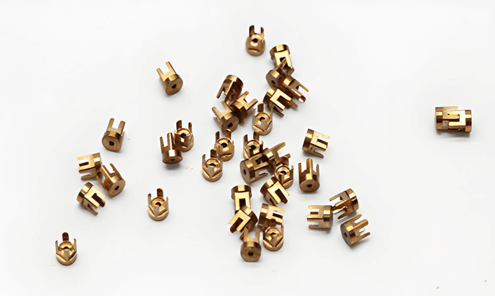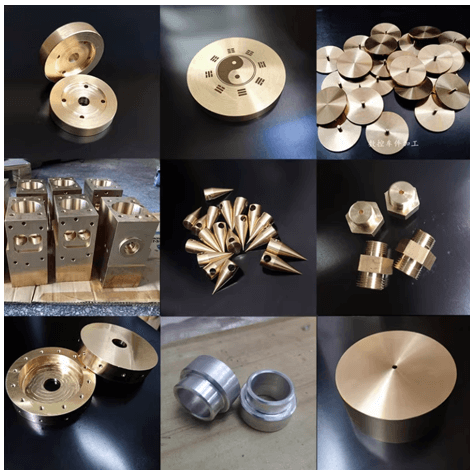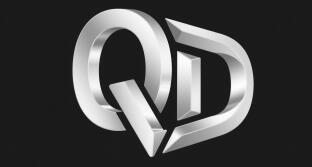Tin bronze castings are used to produce bearings, bushings, valves, pump components, and more. QD is a supplier and manufacturer of tin bronze castings. Please feel free to contact the QD team for your needs.

What is Tin Bronze?
Tin bronze is a copper-based alloy. It uses tin as its primary alloying element. The tin content ranges from 3% to 14%.
It has relatively high strength and hardness. Compared to pure copper, tin bronze shows significantly improved mechanical properties. By adjusting its composition and applying heat treatment, we can further customize its characteristics to meet different operational needs.
Key Characteristics
| Property | Description | Advantage |
| Good Wear Resistance | Low friction coefficient when paired with steel shafts. Has excellent friction compatibility. | Extends equipment service life. Reduces downtime and replacement frequency. |
| Strong Corrosion Resistance | Good resistance to seawater, most organic acids, and alkaline media. Resists pitting and stress corrosion cracking. | Suitable for harsh environments like marine and chemical industries. |
| Good Mechanical Properties | Higher strength and hardness than pure copper. Good toughness and fatigue resistance. | Suitable for high-load and dynamic conditions. Avoids brittle fracture. |
| Self-Lubricating Property | Maintains low friction even without external lubrication. Reduces wear. | Decreases reliance on lubrication systems. Improves operational reliability. |
| Anti-Galling Property | Resists adhesion with mating metals under high load or temperature. Prevents seizing. | Enhances equipment safety and stability. Ideal for heavy machinery. |
| Excellent Castability | Good fluidity, low shrinkage. Easy to form complex structures. High surface finish. | Reduces subsequent machining costs. Suitable for precision components. |
Good Wear Resistance: It has excellent friction compatibility. When paired with hard materials like steel shafts, the soft matrix of tin bronze embeds with hard phases. This structure can form a protective film during friction. It reduces wear on the shaft. Suitable for manufacturing bearings and bushings.
Strong Corrosion Resistance: It offers outstanding corrosion resistance. Especially in seawater, industrial water, organic acids, and weak alkaline environments. Its dense surface oxide layer effectively blocks corrosive media. Tin bronze pump housings and valve components can resist seawater erosion for long periods.
Good Mechanical Properties: Adjusting the tin content and adding elements like phosphorus improves the strength, hardness, and toughness of tin bronze. Typical tin bronze offers tensile strength of 300-600 MPa and hardness of HB 60-120. This is much higher than pure copper. It is suitable for making gears and turbines.
Main Application Fields

Mechanical Engineering
- Bearings and bushings: Used in low-speed, heavy-duty equipment like machine tools, mining machinery, and stamping equipment.
- Gears and worms: Suitable for transmission systems.
- Guide components
Marine and Offshore Engineering
- Pump housings and impellers
- Valve components
- Propellers and steering gears
Chemical & Energy Industry
- Pipe fittings: Resist organic acids and alkaline media. Suitable for chemical equipment.
- Heat exchanger components
- Safety valves and pressure elements
Other Fields
- Decoration & architecture: Warm traditional color and weather resistance make it suitable for door decor and sculptures.
- Electrical connectors: Not a primary application, but its electrical conductivity remains valuable in specific scenarios.

Difference from Brass
Although both tin bronze and brass are copper alloys, they differ significantly in composition, properties, and suitable applications.
| Comparison Aspect | Tin Bronze | Brass |
| Main Composition | Copper + Tin (may contain phosphorus, zinc, etc.) | Copper + Zinc (may contain lead, aluminum, etc.) |
| Wear Resistance | High. Suitable for heavy-duty friction applications | Medium. Suitable for light-duty or general mechanical parts |
| Corrosion Resistance | High. Especially resistant to seawater and organic acids | Average. Sensitive to certain media (e.g., ammonia water) |
| Mechanical Strength | Relatively high. Hardness and tensile strength better than brass | Medium. Better plasticity and machinability |
| Cost | Higher. Due to tin content and process requirements | Lower. Suitable for cost-sensitive applications |
| Appearance | Subdued, dark golden | Bright, golden yellow |
| Typical Applications | Bearings, bushings, marine components, chemical valves | Water pipe fittings, musical instruments, decorative parts, screws |
Summary of Differences: Brass has lower cost and an attractive appearance, making it more common for light-duty and decorative applications. Tin bronze offers better wear resistance, corrosion resistance, and mechanical properties, making it more suitable for demanding industrial conditions. When selecting materials, consider the working conditions, lifecycle cost, and performance requirements.
Contact Us
Need wear-resistant, seawater-proof, and reliable bearing or valve components? Tin bronze is a proven choice. Let us provide you with professional tin bronze castings. QD offers high-performance casting solutions for our clients. Contact us by phone, email, or our website for inquiries. We will provide customized support based on your needs.

FAQ
1. Which applications is tin bronze best suited for?
Tin bronze is particularly suitable for low-speed, heavy-load sliding friction applications. Examples include bearings, bushings, marine pump valves, and chemical equipment components.
2. How is the wear resistance of tin bronze verified?
It can be verified through laboratory tests and real-world application cases. Tin bronze bearings from our factory have operated continuously for tens of thousands of hours in customer equipment with no significant wear.
3. Is tin bronze resistant to seawater corrosion?
Yes. Tin bronze offers excellent corrosion resistance to seawater. It is commonly used in marine and offshore engineering components. Its surface oxide film effectively resists chloride ion erosion.
4. How to balance cost between tin bronze and brass?
Although tin bronze has a higher initial cost, its longer service life and lower maintenance needs make it more economical in long-term use. Brass is suitable for applications with limited budgets and lighter loads.
5. How to ensure the quality of tin bronze castings?
Key control points include precise composition ratio, optimized casting process, heat treatment, and non-destructive testing. QD ensures every batch of castings meets standards.
